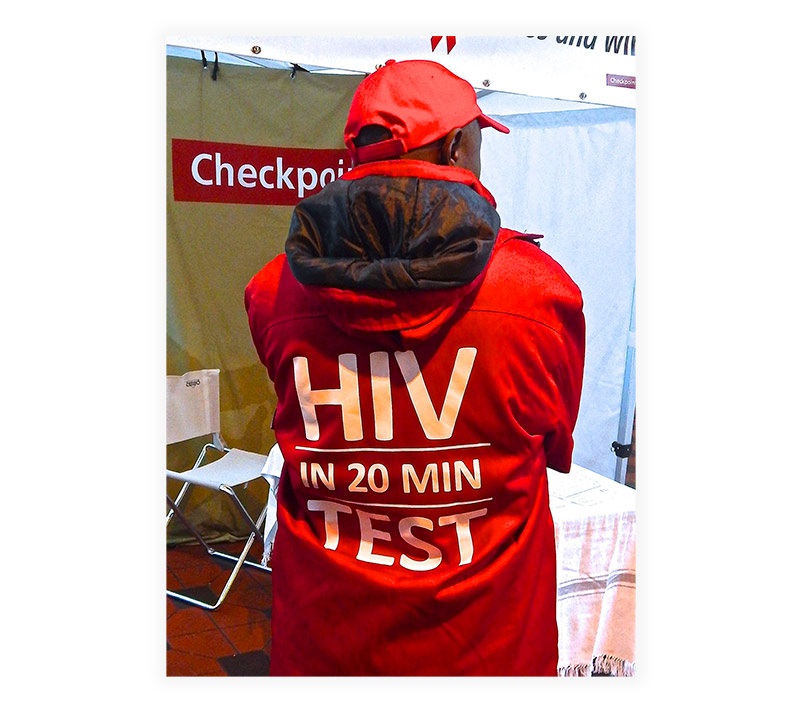With more than 2.4 million people diagnosed, yet many others unaware of their status, critical action is neededCopenhagen & Stockholm, 28 November 2023Although the WHO European Region has made progress in tackling HIV, significant challenges remain in identifying and treating cases, as well as preventing infection in the first place. Expanding access to HIV testing and treatment, along with acknowledging and addressing the persistent HIV-related stigma and discrimination that prevents people from seeking diagnosis and care, are key steps to stop the rise in infection in several parts of the Region.This urgent call to action stems from a newly released surveillance report based on 2022 data and jointly published by the WHO Regional Office for Europe and the European Centre for Disease Prevention and Control (ECDC). Released ahead of World AIDS Day 2023, the report highlights the progress, challenges and trends in HIV across the European Region.Improved access to testing has led to a 4.2% increase in HIV diagnoses, with 37 out of 49 countries reporting rising numbers. Several countries recorded the highest-ever number of diagnoses in a single year. Data reveal that 110 486 HIV diagnoses were made in the European Region in 2022, bringing the total diagnoses to 2.4 million.Factors contributing to the 2022 increase in diagnoses include the resumption of normal testing services after the COVID-19 pandemic, expanded and targeted HIV testing services, and the implementation of new testing strategies.“An HIV diagnosis is not a death sentence. Once diagnosed, highly effective treatment is available, which also helps reduce the spread of the disease, keeping your loved ones safe,” explained Dr Hans Henri P. Kluge, WHO Regional Director for Europe. “This increase in diagnoses is a great achievement and I applaud those working hard to make rapid testing available in the communities where people with HIV live. However, we still have a way to go to ensure no one is left behind. We know there are significant numbers of people in our region who do not realize they are living with HIV; in fact, only 72% are aware of their status. The sad truth is that some four decades after HIV was identified, persistent stigma prevents many people from coming forward. We simply will not reach everyone with the care and treatment they need until we move beyond the stigma associated with HIV.”ECDC Director, Dr Andrea Ammon said: “While an increase in diagnoses in 2022 might seem like a bad thing, it is evidence that we are trending in the right direction with many people living with HIV better able to access the testing, treatment and support services they need. But we can and must do more. More than 1 in 10 people living with HIV in the EU/EEA [European Union/European Economic Area] are still unaware of their status, something that contributes to the late diagnoses we are seeing, worse outcomes and the continued spread of HIV”. She added: “In the last year alone, 1 in 6 people living with HIV have avoided health-care services because of fear of being treated differently. Stigma in health-care settings causes avoidance of health-care services, which in turn contributes to late HIV diagnosis and treatment. We need to address stigma in these settings to ensure that people living with HIV are able to seek care without fearing being treated differently due to their HIV status”.Laid bare in the new report are the regional disparities present in the WHO European Region with 71.6% (79 144) of new diagnoses made in the east, against 20.3% in the west (22 397), and just 8.1% in the centre of the Region (8945). Of the 110 486 diagnoses in 2022, 22 995 were in the EU/EEA.In the east of the Region, HIV testing and case detection improved compared to the previous year, reaching more individuals with treatment and care. Heterosexual sex remains the most commonly reported route of transmission in the east, although reported transmission through sex between men has increased significantly throughout the past decade.The movement of people living with HIV into EU/EEA countries has also contributed to the rise in HIV diagnoses there. A notable 16.6% of diagnoses in the EU/EEA were from people who had arrived in these countries with an existing diagnosis. These data indicate the need for migrant-sensitive HIV prevention and testing services and rapid linkage to accessible HIV treatment for all people living with HIV in the region.Robust surveillance, monitoring and evaluation strategies play a crucial role in identifying and addressing vulnerabilities within key populations, enabling health authorities to adapt their interventions to fill gaps and tailor them to observed changes on the ground, such as the notable increase in migration across the European Region.Throughout the Region, more than half of HIV diagnoses come too late, with a CD4 count below 350 cells/mm3, indicating an urgent need to explore the underlying challenges that make people unable or unwilling to access timely testing and care. Regional variations indicate the need to improve testing programmes and address barriers, including reducing stigma to avoid late diagnoses. Stigma takes diverse forms, across society and within the health-care sector itself.The ECDC and WHO reaffirm their commitment to supporting countries in the EU/EEA and WHO European Region in accelerating progress towards reaching the Sustainable Development Goals for HIV. In close collaboration with partner organizations dedicated to reducing stigma, the focus will be on testing, treatment and prevention activities, as well as enhancing surveillance and monitoring through dedicated guidance, workshops, webinars and technical support.


